The roofing category has experienced a dip over the last few years, but things are looking up for contractors this year, according to leading Canadian roofing vendors.
Low interest rates and their impact on mortgages have translated into a boom for construction and renovation, and roofing is no exception. “In 2025, the construction industry is expected to grow. At GAF, we also anticipate seeing this growth across our business this year and expect contractors to see continued demand,” says James Cito, Senior Director of Residential Shingle Marketing at GAF.
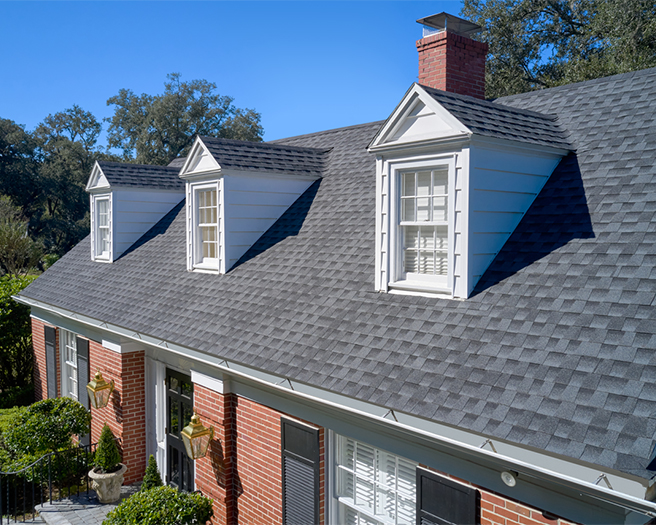
Photo courtesy of GAF
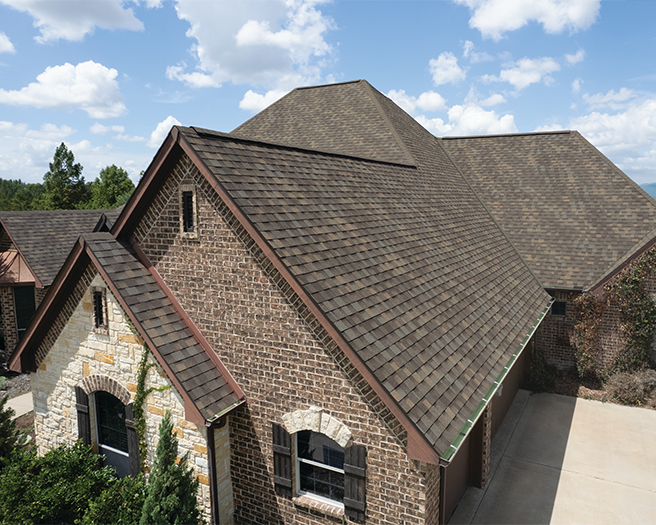
Photo courtesy of IKO Canada
Homeowners across Canada are placing greater emphasis on performance, energy efficiency, and aesthetics while evolving insurance requirements and sustainability standards are shaping purchasing decisions, says Rob Davidson, Vice-President of Residential Sales for Canada at IKO. “Roofing systems, including essentials like shingles, ice and water protection, and underlayment will always remain in demand as homeowners and builders seek reliable, high-performing solutions.”’
He says this has prompted IKO to introduce advanced roofing systems designed to meet modern needs, comply with stricter regulations and handle the changing environment. “The Canadian roofing industry is moving fast, and we’re ensuring contractors have the tools, products, and support they need to stay ahead and succeed.”
A positive but tentative market
While some predict significant growth in some areas of the roofing space, others are expecting more modest improvement overall over last year.
Bernard Nadeau, Vice-President of Sales & Marketing at Saint-Gobain, parent to Building Products of Canada and CertainTeed roofing products, expects positive but moderate growth in 2025. “The market should show slight growth compared with last year.”
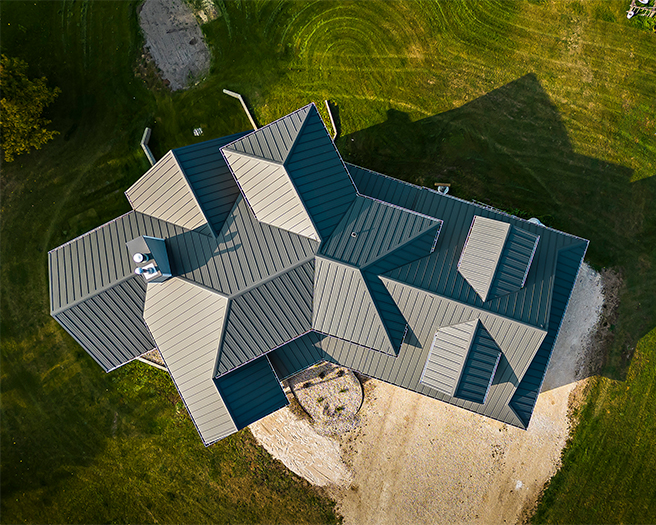
Photo courtesy of Westman Steel Industries
He adds that despite the positive impact on construction and renovation of lower interest rates there are still many unknown factors, like tariffs, that provoke caution.
Greg Gardenits, National Director of Sales & Marketing of Westman Steel Industries, is more optimistic: “As we move into 2025, the roofing industry remains robust, driven by a mix of residential, agricultural, and commercial projects,” he says. “Demand is expected to stay strong as new builds and renovations continue, especially in rural and suburban markets where steel roofing has seen significant adoption.”
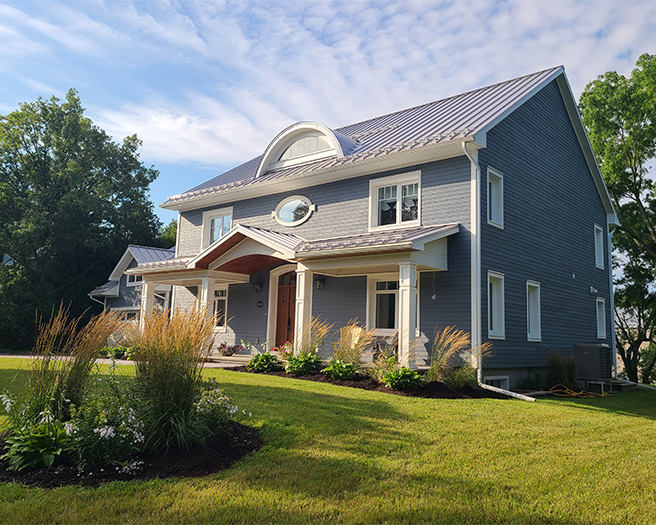
Photo courtesy of Ideal Roofing
Steel roofing continues its rise
Metal roofing is increasingly popular for several reasons and saw growth even during more economically conservative times, according to several roofing suppliers.
“The traditional roofing category experienced double-digit declines in sales last year; however, metal roofing experienced growth in an economy where interest rates were quite high,” says Randal Rocchio, Sales Manager, Ideal Roofing.
Rocchio attributes this growth to homeowners, architects, designers and insurance companies recognizing the value of metal roofs, especially given more extreme recent weather events.
Chris McPhail, National Accounts Manager at Vicwest Building Products predicts an uptick in residential roofing in the second half of 2025. He’s seen similar growth in steel roofing products. He notes his company’s True Nature line of steel shingles grew despite market lows as consumers seek more durable and sustainable options.
McPhail says residential steel roofing is, “a great way for a roofing contractor to expand their business.”
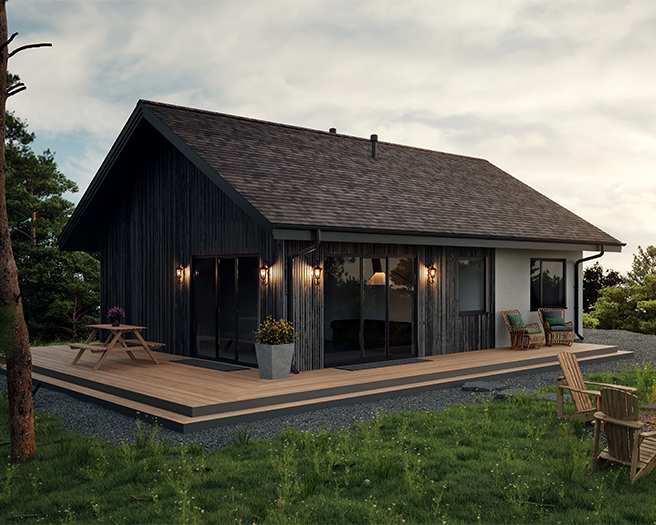
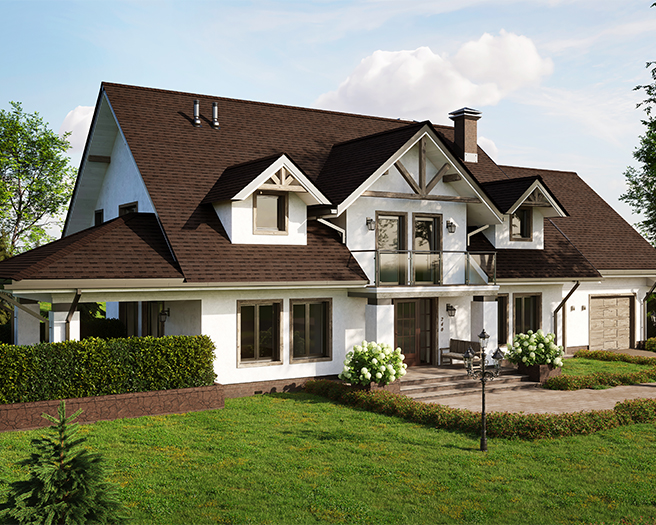
Photos courtesy of Building Products of Canada
Roofing colour trends
It may come as little surprise that darker colours remain popular for roofing, as they do in other areas of the home’s facade.
“The going trend over the last few years has been to a darker family of colours as well as a transition to a less glossy Matte series of finishes,” McPhail says. “Our regular WeatherXL Black and Ebony Matte have experienced substantial growth compared to other colours.”
Of course, some builders and homeowners are going a different direction, notes Nathalie Lambert, Marketing Director at Saint-Gobain with copper-toned roofs gaining popularity across Canada.
“While black is still the most popular roofing choice, coppery brown tones are gaining traction in exterior home decor – from outdoor furniture to garden accessories – and so we’re seeing a movement towards consumers choosing these shades for their roofs as well.”
She says this colour is part of the back-to-nature trend and blends well with tree-lined or rustic environments. She points to BP of Canada products like Signature Mesquite and Toscana as examples. “What’s more, they complement a variety of architectural styles and have an organic vibe that stands the test of time.”
Lambert adds that grey hues featuring hints of copper or tan are also growing in popularity, like BP’s Dublin and Edinburgh Signature shingles. Using BP’s Profusio tool, highly customized roofing colours are also possible, she adds.
Colour and design choices are evolving, Gardenits suggests, and he says Westman Steel has an extensive colour palette and design options that cater to these emerging trends.
“While traditional shades like charcoal, black, and slate remain top choices, there’s a rising demand for bolder colours such as deep reds and forest greens, particularly in residential and commercial sectors.”
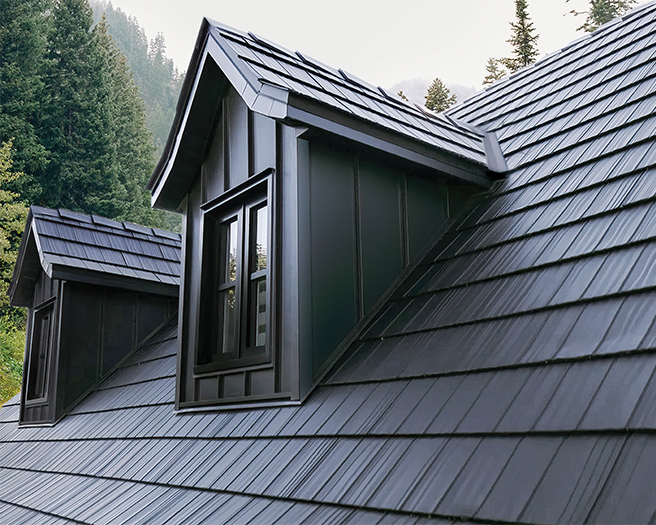
Photo courtesy of Vicwest
As with all aspects of a home’s façade, many homeowners want to put their unique thumbprint on their roof’s appearance, so It’s becoming less cut and dry what to expect.
“When it comes to roofing aesthetics, there are no strict rules anymore,” Davidson says. “Homeowners are moving beyond traditional choices, blending monochromatic, classic shades with bolder, more expressive colours to better reflect their personal style.”
Cito notes that his company’s Timberline HDZ shingles are available across a wide range of colours, and that homeowners can “try them on for size” using its GAF Virtual Remodeler.
Sustainability and energy efficiency
The environment looms large for most homeowners both from the perspective of energy–efficiency and product performance.
“The consumer’s demand for more sustainable products is a key driver in all segments of the building materials industry. Vicwest is meeting this demand with our Planet Passionate strategy that aims to improve our impact on three big global issues: climate change, circularity and protection of our natural world,” McPhail says.
That translates into the company’s steel products being made from recyclable material and being fully recyclable, greater use of solar power and rainwater collection at its manufacturing facilities, reduced landfill waste, and more.
In steel roofing, energy-efficient roofing solutions, including cool roofing technology that reflects more sunlight and reduces heat absorption, are gaining traction among environmentally conscious homeowners and businesses, Gardenits says.
It’s not just homeowners calling for greater sustainability, adds McPhail.
“Designers and architects alike share in the sustainable vision for the future, pushing this segment into the institutional, commercial, and industrial segments of the markets,” he says. “The path for more responsible, sustainable and durable products is clear, and steel roofing is firmly on this path.”
Combating extreme weather
With severe weather events on the rise, roofing vendors are innovating to make sure their products deliver the performance needed.
With that in mind, Lambert professes the importance of making sure to select high-performance roofing products that provide maximum resistance and protection against high winds and wind-driven rain, ice build-up and hail. She also adds to consider the regional climate.
She says her company’s Signature shingles are designed to withstand the harshest weather while offering a balance of performance, lifestyle and individuality. The company’s Weather-Tite® Plus technology is guaranteed to withstand winds of up to 220 km/h (a Category 4 hurricane).
Davidson points to the recent hailstorm in Calgary, which caused widespread damage, to how important it is to select materials designed to withstand such conditions. He says contractors are shifting towards performance products, like IKO Nordic Performance Shingles, with higher impact ratings for better protection and long-term value.
“Proven Performance is at the heart of everything IKO does, we’re proud to share that all three of our laminate shingle lines (Cambridge, Dynasty and Nordic) now feature at least a Class 3 impact resistance rating,” he says, with the company’s Nordic shingles boast a Class 4 rating. “These upgrades provide homeowners with peace of mind knowing their roof is designed to endure the toughest conditions, no matter what Mother Nature throws their way.”
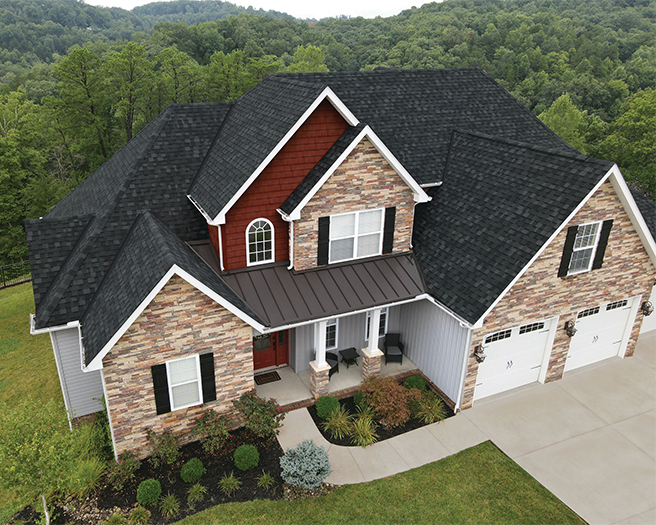
Photo courtesy of IKO Canada
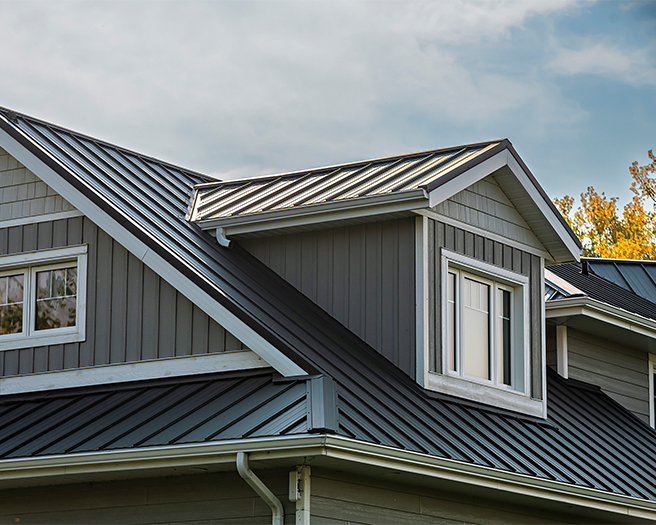
Photo courtesy of Westman Steel Industries
Cito notes Timberline HDZ shingles are eligible for the WindProven Limited Wind Warranty when installed with the required combination of four qualifying accessories, which provides peace of mind amidst the increasing weather events.
Rocchio says his company’s Wakefield Bridge steel shingles withstand high winds and hail and prevent the spreading of fires. Metal roofing offers protection from wildfires since wind-blown embers can ignite combustible roofs and spread.
Gardenits notes that Westman Steel’s enhanced PVDF (polyvinylidene fluoride) finishes provide superior resistance to fading, corrosion, and extreme weather conditions.
With the increase in inclement weather, contractors need to know they are installing tried and tested products, McPhail says. He adds the company has developed an innovative Quadra-Loc technology to ensure exceptional watertightness and virtually eliminate the risk of uplift caused by high winds and heavy rains.
Rising insurance claims may be an opportunity for contractors. Cito suggests they use his company’s GAF ScopeConnect resource (found on its website). He calls it a valuable, cost-effective tool. “It’s easy to receive a complete insurance scope of work with industry-standard formatting, often in under 24 hours. This service has helped many contractors break into insurance restoration work or streamline their current processes.”
Innovations in shingle technology
Manufacturers are innovating around more than performance; aesthetics and installation improvements are also an R&D focus.
“The quality of the coating systems that go onto our products continues to evolve,” McPhail says. “This speaks to the innovation behind the market demand. 40-year warranties are now the norm. (And), we have recently seen the introduction of more realistic wood-grain finishes: our Expressence finishes.”
For an easier and more efficient install, Cito points to Timberline HDZ shingles’ use of LayerLock technology with the StrikeZone nailing area that he says provides the industry’s widest nailing zone to offer 99.9% accuracy. In addition, they feature the company’s proprietary StainGuard Plus Algae Protection technology.
“Advancements in steel roofing technology continue to enhance durability, efficiency, and ease of installation,” Gardenits says. “Improvements in steel panel interlocking systems are making installations quicker and more secure, reducing labour costs and increasing overall efficiency.”
Technology is “shaking things up in the roofing industry,” Davidson says. “Making life easier for contractors, builders, and homeowners.”
“AI-powered analytics, aerial measurements, and remote assessments are becoming the norm, helping contractors work smarter, not harder. Drones, 3D modeling, and augmented reality are also on the rise, allowing for better project planning and visualization.”
IKO recently revamped its website to use technology to help contractors and homeowners alike, featuring an instant quote feature and time-saving tools to help installers grow their business, and expert design advice, insights and inspiration for householders.
Buying Canadian
The year ahead will be a dynamic one with tightening environmental regulations, growing demand for skilled labour and, of course, the risk of tariffs and trade policies, Gardenits says. “Tariffs and trade policies may influence steel pricing, making it essential for contractors to stay informed about market fluctuations.”
With tariff fear looming large, perhaps one of the bigger trends of 2025 is the move to buy Canadian, McPhail suggests. He boasts his company does just that. “Over 95% of the steel Vicwest purchases is Canadian. Our manufacturing facilities are national. Our products are produced by Canadians for Canadians.”
Rocchio also speaks proudly of Ideal Roofing’s Canadian roots and support for Canadian steel. “Ideal Roofing is a fourth-generation, family-owned, manufacturing company since 1929. We are Canadian-owned and operated.” He notes last year Ideal Roofing opened its third plant in Moncton, NB. “We proudly support the Canadian steel mills. The support we receive allows Ideal Roofing to continue to invest in our more than 350 employees, and local economies.”
With tentative times ahead, McPhail urges contractors, builders and homeowners to look to Canadian roofing options.
“We are coming off a very uncertain time of high inflation creating higher interest rates fueling consumer hesitation. This hesitation has been replaced by the fear of tariffs from the trade war initiated by the US against Canada and the world,” he says.
“How long this drags on has yet to be determined. The longer this cloud hangs over our heads, the longer consumer hesitancy will exist in our market, I would urge contractors to know what products they are using, (and) support Canadian manufacturing of building materials.”—
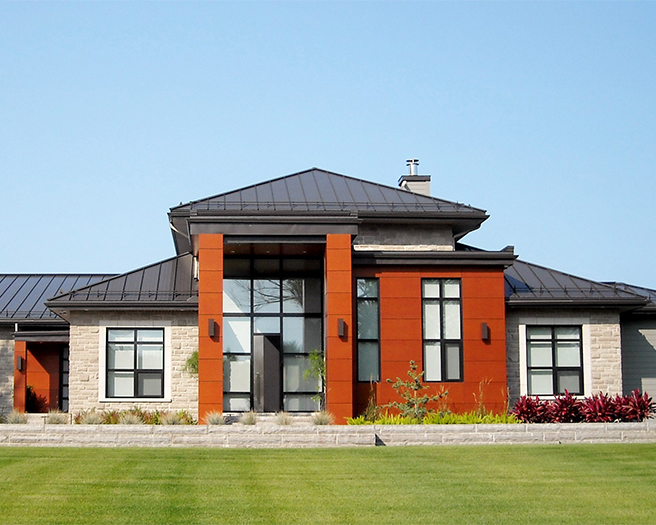
Photo courtesy of Ideal Roofing
